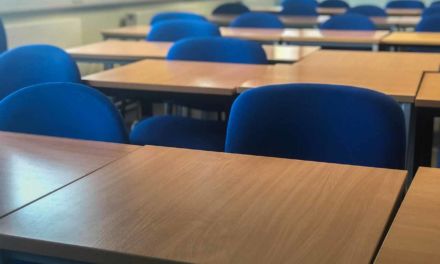Ofsted is the Office for Standards in Education, Children’s Services, and Skills. This governmental body is responsible for regularly inspecting services providing education to young learners. These services range from childminders to training providers, schools to local authorities. The governmental body further uncovers what they find in the inspection. These findings are then shared with Parliament, parents, carers, and commissioners.
The other side of the story is that the inspections aimed at improving the quality of education at all levels might seem tedious to the institutions. However, schools and other educational institutions can successfully prepare their best to qualify for these inspections.
Roles and Responsibilities of Ofsted
The governmental body has specific defined roles and responsibilities aimed at improving the quality of services provided by educational institutions. Their roles and responsibilities can be summarised in three main categories: inspecting, regulating, and reporting.
Under the inspecting sector, the governmental body is responsible for inspecting the childcare, local governments, adoption and fostering organizations, colleges, apprenticeship providers, schools and academies, jail education, and many more educational institutions and programs outside of higher education. These institutions are inspected on several frameworks. However, the essential aspect that the inspection is based on is the quality of the education provided in the educational institution.
Various early years and children’s social care services are regulated to ensure that they are appropriate for children and young people in the care of the institutions. The institution is also in charge of reporting to the Parliament. It provides summaries of their findings to inform decision-makers on these services’ efficiency and raise the level of training and education generally.
The timings of Ofsted inspections
Typically, an Ofsted inspection may occur up to five school days after the first-day students register for the autumn term. The Ofsted inspection cycle for schools typically lasts for four years. However, a lot can change depending on the type of institution and the school’s earlier grade.
What are the main sections under Ofsted inspections?
Two main sections are available under Ofsted inspections. Firstly, there is the section 8 inspection, where a school that has received a “good” or “excellent” rating in the past will undergo an examination every four years where inspectors do not assign grades. If Ofsted inspectors decide that the standards have improved or, on the contrary, have declined, they may quickly convert a section 8 examination into a section 5 inspection, typically occurring within one to two years. They conduct a thorough inspection with graded judgments in this instance.
How can educational institutions be prepared for the Ofsted inspections?
Educators and students are often seen determinedly overworking themselves to present their institution in the best possible light. All of this could confuse. However, things do not always turn out positively for educational institutions. There are a lot of steps that can be taken timely to prepare for these Ofsted inspections. Some of these steps are listed below.
• Have an Ofsted inspection strategy- Ofsted inspections often never happen at an existing decided time. However, academic institutions should make the calculations instead of worrying about random inspections themselves. The most typical assumption is that assessments of previously rated “Good” schools should occur every three years. In one to two years, there will be a second inspection to determine if the inspector believes the school has decreased or improved. Academic institutions must have a strategy for these inspections rather than the last-minute chaos of preparing at the very last minute. The method refers to standard operating protocols that institutions should follow for what to do after receiving a call, who to contact, when, and how to proceed.
• Create an exemplary first impression- First impressions are said to be lasting. The educators must always make the first contact with the people responsible for inspection after the official news. Establishing the connection first helps create a genuine and easy relationship. On the contrary, when educators approach the people involved in the inspection feeling scared, they tend to create a communication gap. It is wise for educators to create a warm, welcoming committee made of students instead of treating these officials formally.
• Be genuine- Educators go out of their way to impress the organization with their quality of education. However, this should not be achieved by experimenting with the teaching methods. Teachers should be genuine in their practices and stick to the conventional teaching methods that work best for their students.
Other practices that educational institutions can adopt for successfully qualifying an inspection are regular lesson planning, maintenance of data, and ensuring cleanliness in educational institutions. Some of the practical techniques are manipulating the seating plan so that the students can easily interact with the inspectors and also providing a summary of the institution’s governance to the concerned individual.
Use an online alternative provision to improve Ofsted grade?
Have you ever considered using an online alternative provision to help improve your Ofsted rating? Are you currently experiencing challenges, such as students at risk of exclusion or those with poor attendance rates? What about learners who are school-phobic or have mental health issues?
EDClass can educate these learners and attendance codes can be claimed, all from a remote location. Students are assisted one-to-one by UK-qualified teachers and are safeguarded when learning online. If you would like to learn more about EDClass then call the team on 01909 568 338, send an email to mail@edclass.com or book a free online demonstration by clicking here or clicking the image below.










